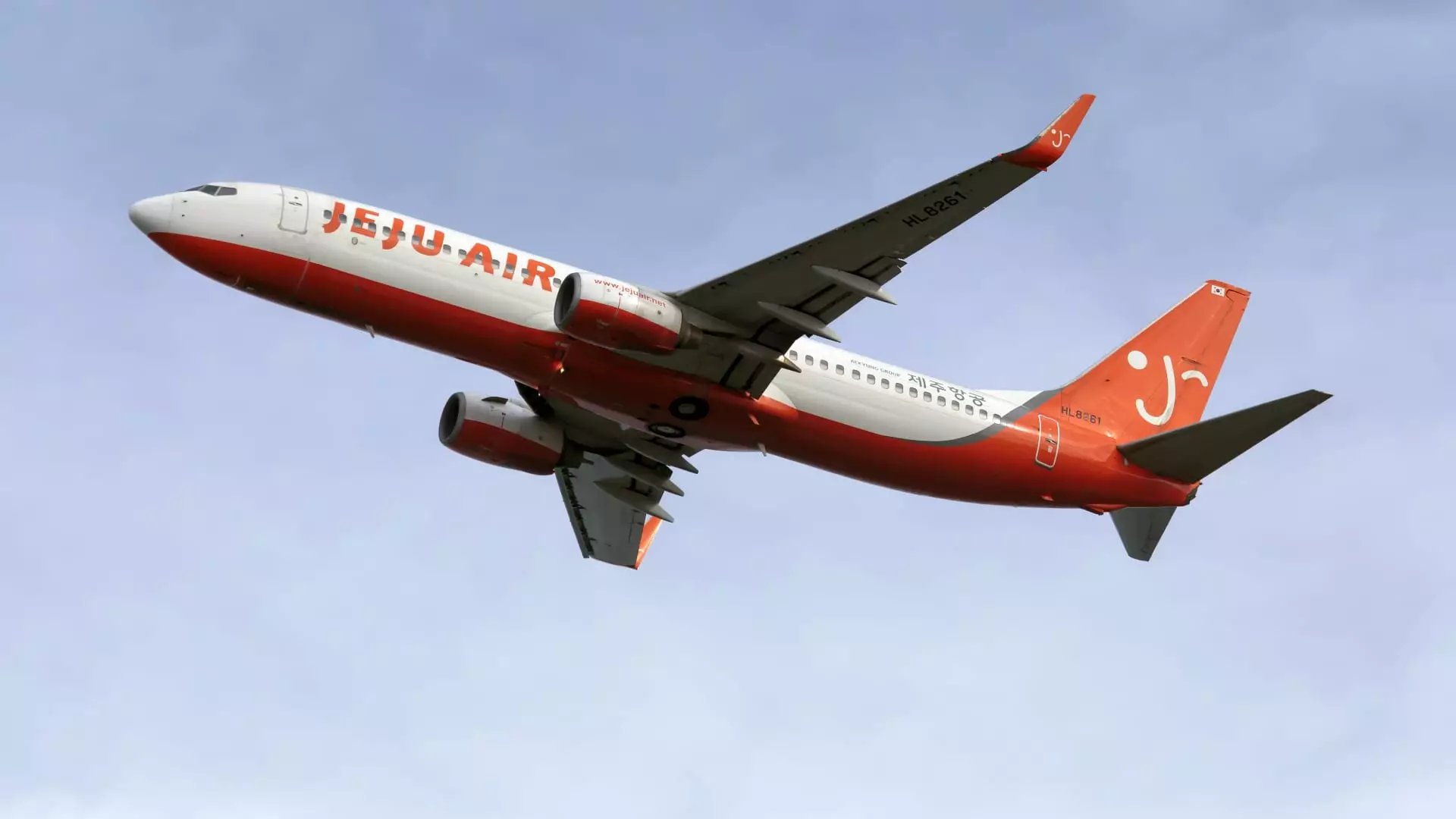In a tragic event that has shaken the nation, investigators in South Korea are delving into the circumstances that led to a disastrous belly landing of Jeju Air Flight 7C2216. The incident occurred at Muan International Airport, resulting in the loss of 179 lives, with only two survivors emerging from the wreckage as flames engulfed the aircraft. This has been identified as South Korea’s deadliest aviation disaster in decades, highlighting the critical need for a thorough investigation into what went wrong.
Following the catastrophe, South Korea’s acting President Choi Sang-mok initiated an emergency review of the Boeing 737-800 aircraft operating within the nation’s airlines. This model, one of the most frequently utilized in commercial aviation, boasts a generally impressive safety record. With approximately 4,400 of these aircraft flying globally, they represent around 17% of the world’s active commercial jet fleet. The average age of these airplanes is 13 years, and the specific aircraft involved in the incident was approximately 15 years old. Understanding the aircraft’s operational history and maintenance routine will be crucial in the oversight of hundreds of these planes still in service.
Delivered to Jeju Air in 2017, the aircraft previously served under European low-cost airline Ryanair. Given its relatively recent delivery, many aviation experts are questioning whether the age of the jet could have been a contributing factor to the catastrophe. According to Richard Aboulafia of AeroDynamic Advisory, the prospects of locating a design flaw in the Boeing 737-800 are slim. The plane type has undergone rigorous testing and certification processes, making it improbable that a latent design defect would manifest in such a severe manner after years of successful service.
The investigation is poised to be detailed and elaborate, potentially taking over a year to reach definitive conclusions. Many critical points remain unanswered, notably the malfunction that caused the landing gear to remain retracted upon landing. Even in the case of hydraulic failures, pilots of Boeing 737-800 aircraft are trained to manually lower the landing gear. This raises questions about pilot response and the aircraft’s status prior to reaching the runway.
One theory being considered is a possible bird strike, which could have disoriented the pilots and led to a loss of engine power mid-flight. As Jeff Guzzetti, a retired safety investigator, suggested, if this were the case, the crew might not have had the necessary time to follow emergency procedures, further complicating the landing attempt.
Moreover, survival rates could have been higher had the aircraft not collided with a hard surface at the end of the runway. This assertion emphasizes the need for improved safety measures in airport design to mitigate the impact of such landings.
The U.S. National Transportation Safety Board (NTSB) is spearheading the investigation alongside the Federal Aviation Administration (FAA) and experts from Boeing, given that the aircraft was manufactured in the United States. As per international aviation protocols, the South Korean authorities will head the comprehensive investigation, but they will receive significant input and expertise from the partners involved. This collaborative approach is vital in piecing together the events leading to the accident and ensuring that a thorough analysis is conducted.
The Jeju Air Flight 7C2216 disaster serves as a painful reminder of the vulnerabilities inherent in air travel, even among well-regarded aircraft types. As the investigation unfolds, it is imperative that lessons be learned from this tragedy to bolster aviation safety protocols globally. The aviation community must remain vigilant in its commitment to preventing future incidents, ensuring that all measures are taken to protect passengers and crew alike. Moving forward, the focus must shift toward keeping aviation travel safe and reliable, honoring the lives lost and salvaging the hope of safe journeys in the skies.


Leave a Reply